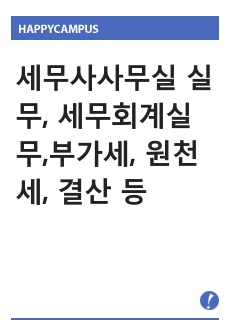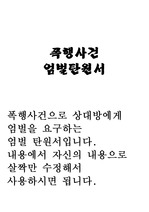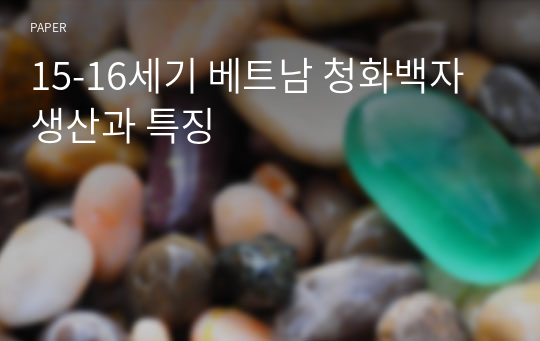* 본 문서는 배포용으로 복사 및 편집이 불가합니다.
서지정보
ㆍ발행기관 : 동양미술사학회
ㆍ수록지정보 : 東洋美術史學 / 6권
ㆍ저자명 : 이정은
목차
국문초록
Ⅰ. 머리말
Ⅱ. 베트남 청화백자의 발달과 전개
Ⅲ. 15-16세기 베트남 청화백자의 제작과정과 가마의 특징
Ⅳ. 15-16세기 베트남 청화백자의 특징
Ⅴ. 맺음말
참고문헌
한국어 초록
본 논문은 15-16세기 베트남 청화백자를 제작한 가마의 형태분석과 여성이 도자 제작에 참여했을 가능성을 제시하고 도자를 분석하여 베트 남 청화백자의 특징을 알아보고자 한다. 기존 논문에서는 중국 청화백자와의 유사성에 초점이 맞춰져 이 부분이 미비하였다. 이 부분을 보강 하기 위해 현지조사를 통해 얻은 자료와 현지 학자들의 의견을 반영하여 베트남 청화백자의 특징을 살펴보고자 한다.
청화백자는 생활용품이자 고가의 무역품이었다. 15-16세기에 베트남은 국내 도자 제작 수준의 발전과 명 해금정책의 배경으로 청화백자를 동남아시아, 류큐, 터키, 이슬람 지역권 등으로 수출하였다. 각국으로 수출된 청화백자는 베트남 북부 지역에 있는 가마에서 주로 생산되었으 며, 북부 지역의 가마가 중국의 가마 형태를 모방하였다는 견해가 있다. 하지만 대표적인 청화백자 생산지인 쭈더우(Chu Đậu) 지역의 가마 형 태를 조사한 결과로는 중국의 용요와 만두요와는 다른 특징을 보여 베 트남 지형에 맞게 재해석하여 제작한 것으로 보인다.
명이나 조선에서는 여성이 도자 제작에는 참여할 수 없는 것이 일반적 이었다. 하지만 베트남에서는 톱카피 사라이 박물관에서 소장하고 있는 <청화백자모란문천구병>이나 16세기 쭈더우 지역과 근접한 곳에 거주한 도공의 아내인 응우옌 티 딘(Nguyễn Thị Đỉnh)이 도자를 제작했다는 흔 적이 남아있어 여성이 도자 제작에 참여했을 가능성이 높아 보인다.
완성된 청화백자는 시간이 흐르면서 베트남적인 특징을 보이게 된다. 수많은 동물 기형을 만들고 정병(켄디)라는 특수 기형을 제작하였다. 베트남 청화백자는 중국처럼 용이나 봉황과 같이 상상 속의 동물을 사용 하기도 하였지만 베트남의 자연환경 속에서 쉽게 접할 수 있는 현실적인 동물인 코끼리, 앵무새, 복어, 물소 등을 기형이나 문양에 활용한 독 특함을 선보였다. 특수 기형인 정병(켄디)도 동아시아에서 주로 생산되 던 형태와 다르게 주구가 보다 길며 손잡이가 없고 높이가 낮은 형태로 상당수 생산되었다.
이를 통해 베트남 청화백자가 중국 도자를 모방하기만 한 것이 아니라 선택적으로 중국의 양식을 수용하면서 점차 베트남 특유의 미감을 담아낸 것을 알 수 있었다. 또한 도자 수출, 제작법, 도자 형식 등을 통 해 베트남 청화백자만의 의의도 함께 찾을 수 있을 것이다
영어 초록
This study is mainly concentrated on three components: the characteristics of Vietnamese blue and white porcelains in the 15th and 16th century which were produced by certain distinguished type of kilns, the possibility of women participated in making ceramics and eminent shape and patterns of the Vietnamese blue and white ware. In the early time, Vietnamese blue and white pottery has not actively studied yet. Most of the researches has focused on certain porcelains; characters and features of which were largely influenced by Chinese blue and white porcelains. Hence, this paper will navigate the characteristics of Vietnamese blue and white china to suggest different views by reflecting a field survey in Vietnam and researches of local scholars. The Vietnamese blue and white porcelains were for everyday use and were highly valued trade goods. In 15-16 century, due to the advance of ceramics production methods and background of Haijin policy(sea ban), Vietnam exported their porcelains to Southeast Asia, Ryukyu Kingdom, Egypt, Turkey. The exported porcelains were produced in kilns in northern Vietnam and there are some opinions that the Vietnamese kilns imitated Chinese kilns style. However, as a result of the inspection of kiln structure in Chu Đậu region, which is a representative production site of the blue and white porcelains, it seems that these kilns show different characteristics from Chinese dragon kilns and Mantou kilns. Therefore, it is strongly believed that the style of Chu Dau kiln is not an imitation, but just a reinterpretation of that of Chinese kilns. In addition, there was a notable history in that Vietnamese women appeared to have involved in ceramics industry though it was not common for the women to work in Ming-dynasty and Joseon Dynasty. Some findings which can support this idea were found. One is that female names were frequently described in a certain letter about the inscription of <Large bulbous bottle with peony scroll> displayed at Topkapi Saray Museum in Istanbul. Another is that some of the products made around the areas of Chu Dau were appeared to have been made by Nguyen Thi Dinh, a female ceramic maker. Based on these, it can be said that there is high possibility of women involved in ceramics industry in Vietnam. Besides, Vietnamese blue and white china has unique characteristics in the products is largely in forms of animal figures and specialized articles such as kundika (kendi). Animal figurative porcelains and patterns are particularly reflected in the shapes of naturally found animals such as elephant, parrot, blowfish, water buffalo, and so on. Rather than that of imaginary Chinese animal characters like Dragon and Phoenix, Kundika (kendi) is also different from most East Asian kundika (kendi): it has low height, long spout without handle. To sum up, Vietnamese blue and white porcelains of the 15th and 16th Centuries were not simply imitations of Chinese pottery. They selectively embraced the influence of Chinese style choosing only those elements that suited the unique and native aesthetic of Vietnam. In addition, the meaning of Vietnamese ceramics can be found in looking at ceramics export, production method of ceramics and Vietnamese ceramics style. Key
참고 자료
없음


























